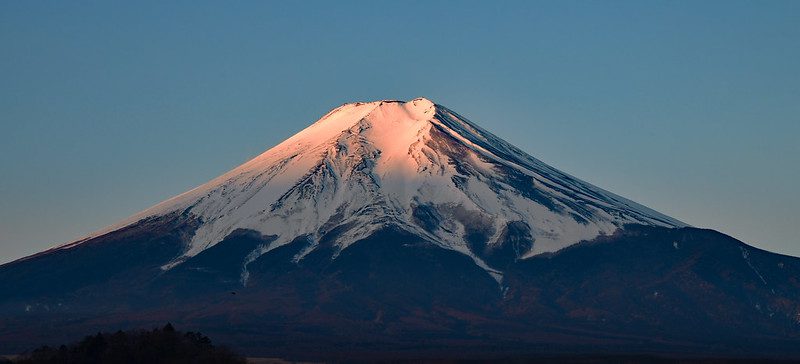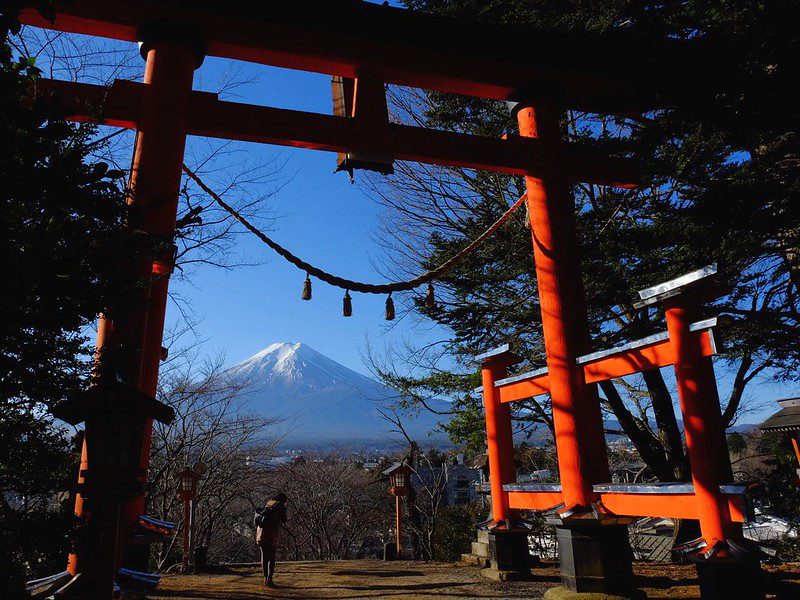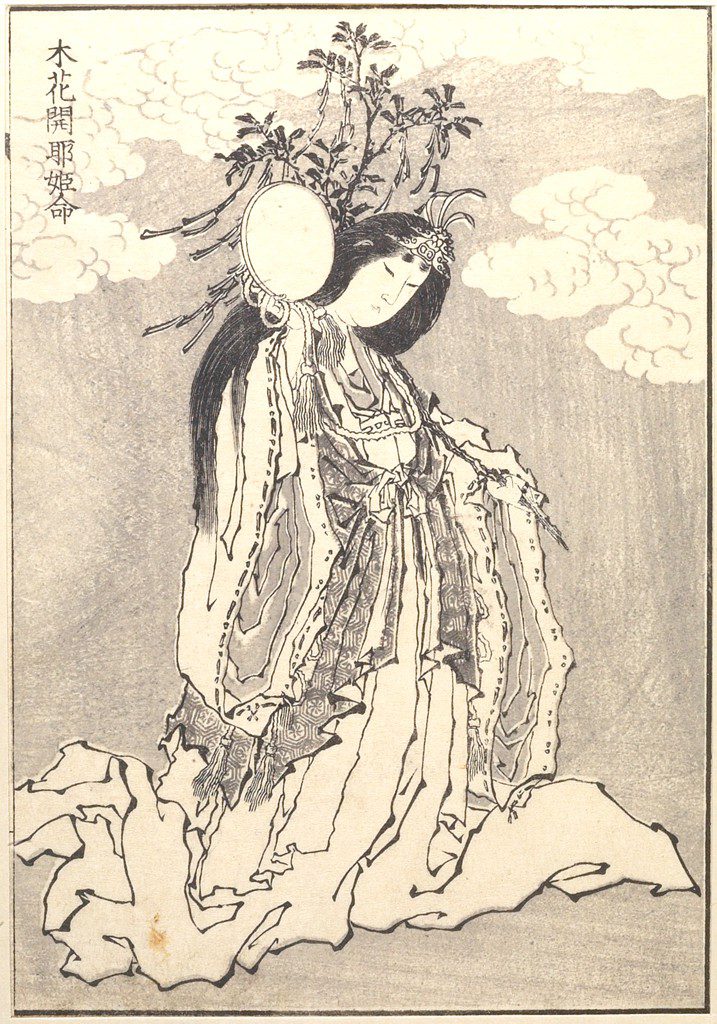Mount Fuji’s more than just a mountain – it’s an active volcano! This natural behemoth, found out in Japan, is a massive draw for tourists from all over the world. What’s more, this towering beauty also holds much religious and spiritual significance to many people. Here are some fun facts about Mount Fuji to marvel at.
1. It’s a true record-breaker.
Mount Fuji holds several records. It is the highest mountain in Japan – and across its local group of islands, it is the second tallest volcano. It is also ranked in 7th place of highest peaks on our planet!
2. Just how tall is Mount Fuji, anyway?
Mount Fuji rises to a height of 12,380 feet, which equates to 3,776 metres.
3. It’s not erupted for more than 300 years.
Mount Fuji last erupted in 1707. The shock of the volcanic activity was recorded in Tokyo where volcanic ash fell!

4. It’s Japan’s biggest draw!
More tourists visit Mount Fuji, both from Japan and overseas than any other tourist attraction in the country.
5. It’s been a part of the landscape for a very long time.
Known as a basaltic stratovolcano, Mount Fuji was formed approximately 100,000 years ago. Geologists are able to establish some dates and recognise various eras from rock layers, sediments, skeletal remains, and mineral deposits.
6. Someone actually owns Mount Fuji…
Strange as though it may seem, Mount Fuji is privately owned. As an occupied territory it is in the ownership of Fujisan Hongu Sengen Taisha as an ‘Island Nation’. This includes over 1,300 temples!
7. The name is a genuine mystery.
No one is exactly sure how Mount Fuji was named. The most logical explanation for the choice of name is connected to words describing fire and sun. Those references form a logical link to the fire of a volcano and the impressive way light rays from the sun illuminate the landscape and form impressive, architectural shadows from the summit.
8. Its importance is well-recognised.
Mount Fuji has been listed as a site of cultural importance by the World Heritage Organisation.
9. Its shrines have held much importance, too.
Originally, eight shrines were found at the base of Mount Fuji. They were related to the Shinto religion – and, subsequently, hundreds more have sprung up!

10. It’s a huge wedding location!
Mount Fuji is a stunning setting at which many marriages are conducted. These only take place at the summit when safe weather conditions permit them – taking place in safety – across the months of July and August.
11. A different kind of attack!
During World War II, there were serious discussions taking place between Allied Forces that considered dyeing Mount Fuji – purely to act as psychological warfare against the Japanese!
12. It’s said to have played host to a goddess.
Konohanasakuya-hime is the name of the goddess who is believed to have lived at Mount Fuji. She is also believed to have been the powerful ruler of all volcanoes! This goddess is sometimes referred to as the ‘Blossom Princess’.

FAQs about Mount Fuji
Why were women banned from climbing Mount Fuji?
Women were banned from climbing Mount Fuji until 1872! It was believed to have been dangerous for women before then, as they risked the wrath of the Goddess Konohanasakuya-hime if they were deemed more beautiful than her!
Who was the first person from overseas known to have climbed Mount Fuji?
That acclaim went to Sir Rutherford Alcock in 1868.
When was Mount Fuji first climbed?
Mount Fuji is said to have been first climbed all the way back in 663. Since then, it’s been climbed many, many times.
Do you know any fun facts about Mount Fuji? Share them in the comments below!









